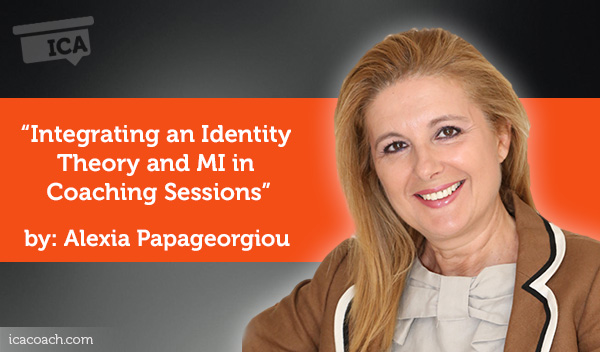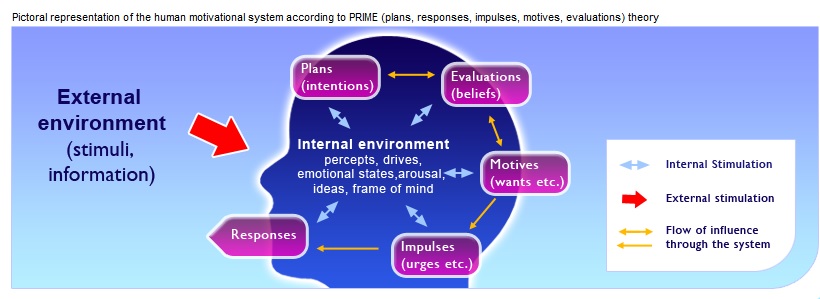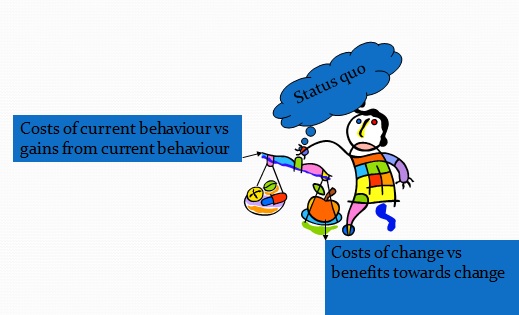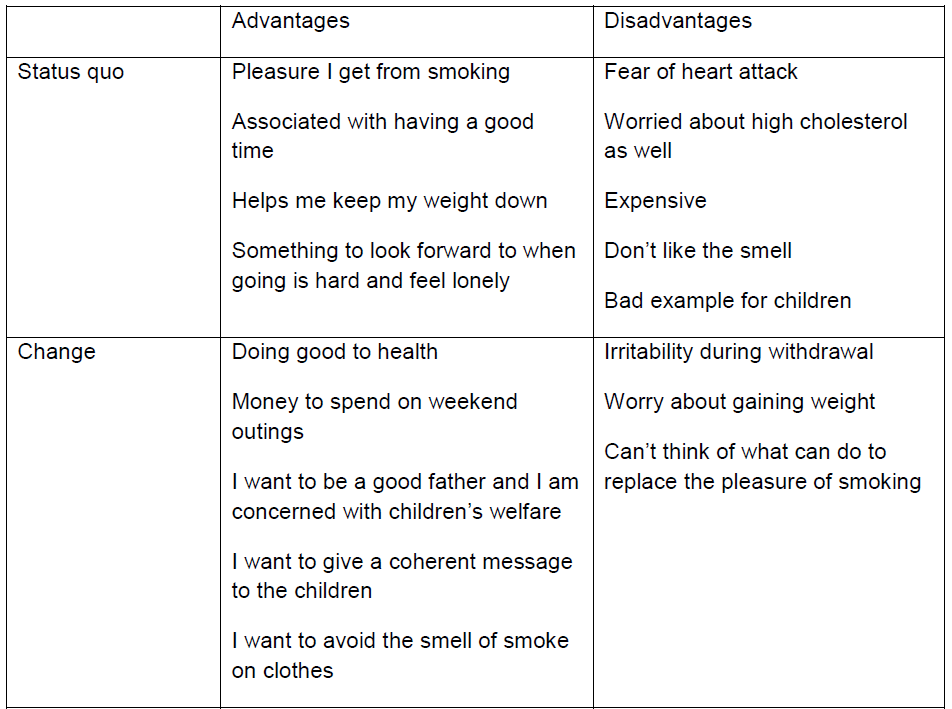
Research Paper By Alexia Papageorgiou
(Health Career Coach, CYPRUS)
For my research paper, I chose to work on two approaches that resonate with me as an academic and as a coach: PRIME Theory and Motivational Interviewing.
The following questions have been part of my life’s compass and extremely useful in my coaching sessions.
Identity Theory
Professor Robert West at the Health Behaviour Research Centre, Department of Epidemiology and Public Health, University College London, has developed an Identity Theory called PRIME to answer the question above. PRIME stands for Plans (P), Responses (R), Impulses (I), Motives (M), and Evaluations (E). According to the theory, our behaviour is so much more than our reasons for performing the behaviour. “ It is wants and needs at each moment that drive our behaviour. Our intentions and beliefs about what is good or bad only influence our actions if they create sufficiently strong wants and needs at the relevant moment. Our image about ourselves and how we feel about that, our identity, is a very strong source of wants and needs which can be enough to overcome wants and needs that arise from our biological drives such as hunger.”
According to Prof West, his theory attempts to understand the human motivational system or as he puts it “the system of ‘forces’ that energise and direct our actions” and as a consequence build our identity. The picture below gives a diagrammatic explanation of the theory.
 Picture 1: Copied from http://www.primetheory.com/summary-prime-motivation.php
Picture 1: Copied from http://www.primetheory.com/summary-prime-motivation.php
Plans (P) are shaped by intentions and characterised by objectives, rules, routines, procedures and actions that motivate us to achieve our goals. Prof West describes Plans as “a mental diary and a ‘to do’ list” that helps us change behaviours such as smoking, drinking or adopting a healthy diet. In order to materialise our plans, we need to remember them at the appropriate time (e.g. not to eat a high calorie meal) and be committed to them. In other words, our commitment to our plan (e.g. a slimmer body) should outweigh the desire to eat our favourite high calorie meal.
Responses (R) as depicted in the picture above, are the final products of the functions that energise our motivational system. For example, “the Motive to not smoke would be competing with the Motive to relieve withdrawal symptoms but if the Motive to quit has a high enough priority/value at that time the Impulse/Inhibitory motive will prevail and the Response will be to not smoke a cigarette”. (http://www.primetheory.com/about-prime-logo.php)
Impulses (I) are internal (e.g. thirst) or external (e.g. the impulse to laugh in response to a joke) forces that can make us engage in actions (e.g. to drink when we are thirsty) or disengage from actions (e.g. not laughing at an inappropriate joke). Impulses can also act as rewards and punishments through associative learning.
Motives (M) are feelings of ‘desire’, ‘want’ or ‘need’ and are generated by drives, emotional state evaluations and past experience. The intensity of the motive depends on the intensity of the emotional state we attach to the goal (e.g. the hungrier we are the more we want to eat). Competing motives can lead to a feeling of ‘conflict’ which is usually “unpleasant and like any other adverse emotional state creates a motive to escape or avoid it”.
Evaluations (E) are beliefs attached to certain situations and could be positive or negative. These beliefs could be the result of our emotional state, external factors such as what important others say or do, vicarious experiences etc.
Evaluations and plans will have no influence unless they create a desire to engage in a healthier behaviour or to avoid an unhealthy behaviour, when the opportunity arises, which outweighs the desire to do something else, which will have no influence unless it generates an impulse to act which is stronger than inertia or impulses to engage in other activities at the time. (West 2006) According to Prof West, our identity comprises of:
“A strong, coherent, deeply entrenched identity that places clear boundaries around a category of behaviour and which anticipates potential challenges will provide strong stability to that behaviour and yield a powerful predictive measure. Fostering such an identity around a new behaviour pattern is a potentially important target for behaviour change interventions. Self-consciously stopping doing something typically means:
As a trainee coach, I found in PRIME an excellent framework for understanding human motivation in relation to shaping and maintaining one’s identity.
The questions I ask myself every time I feel overwhelmed and lost in my life’s journey, have also been proved a useful tool in my coaching practice.
In addition to PRIME theory, another approach, motivational interviewing has enriched my coaching training and practice.
Motivational Interviewing (MI)
Motivational Interviewing (MI) was discovered by Stephen Rollnick in 1983 who worked with William Miller to produce the first book on its principles in 1991. MI is a counselling style that guides people to become aware of the nature of their behaviour and the effect on their personal values, life goals and their social environment. It guides people to elicit their own good motivations for making behaviour changes and empowers them to create alternatives in their social environment which will help them to change and maintain change. (Miller & Rollnick 2012)
MI can be delivered as a one off or more sessions depending on the target behaviour.
According to Miller & Rollnick (2012) the bullet points below encapsulate the spirit of MI:
The concept of ambivalence has already been mentioned above and is one of the most powerful tools of this approach. How do we identify and tackle client’s ambivalence when it comes to behaviour change, without provoking resistance?
 Figure 1: Diagrammatic representation of ambivalence
Figure 1: Diagrammatic representation of ambivalence
According to the authors, there are a number of ways to achieve this task by:
1) Reflection (single of double sided):
Client: But I can’t quit drinking. I mean, all of my friends drink!
Coach: Quitting drinking seems nearly impossible because you spend so much time with others who drink
Client: Right, although maybe I should
Coach: You can’t imagine how you could not drink with your friends, and at the same time you’re worried about how it’s affecting you
Client: Yes. I guess I have mixed feelings
2) Shifting focus:
Client: you see it’s been so busy, it’s hard to always think about my food and I do break the rules all the time
Coach: (detecting he may be going too fast and shifting focus back to agenda setting) I can understand. Can I just check, perhaps this isn’t the best time to talk about this today and you’d rather be talking about something more pressing
3) Reframing
For example, if a client reports a spouse or loved one as saying, “You really need to deal with your weight” the client may view this as “she’s such a nag”. The coach can reframe this as “she must care a lot about you to tell you something she feels is important to you, knowing that you will likely get angry with her“
4) Agreeing with exaggeration
Coach: So, your days are already completely full and you can’t see there could be any way to get some exercise.
5) Rolling with resistance
Client: But I can’t quit smoking. I mean, all of my friends smoke!
Coach: And it may very well be that when we’re through, you’ll decide that it’s worth it to keep on smoking as you have been. It may be too difficult to make a change. That will be up to you.
Client: OK.
In addition to the above empathetic approaches, I find suggesting clients to draw a table with the advantages and disadvantages of changing their behaviour, a useful tool to deal with their ambivalence. The following represents an example of a client who considers quitting smoking.
 Table 1: advantages and disadvantages of quitting smoking
Table 1: advantages and disadvantages of quitting smoking
Conclusion
In this research paper, I tried to combine two approaches that could be helpful in coaching practice. PRIME is an identity theory that explains the power of motivation that drives our actions in shaping and maintaining our identity. Empowering my clients to visualise and work towards maintaining a strong sense of identity has proved a useful tool for me as a coach. Asking them powerful questions such as the following and giving them the opportunity to come up with their own identity labels, rules and plans has given my clients some important tools to cope with behaviour change.
Incorporating the philosophy and principles of Motivational Interviewing in my coaching has helped me overcome what I considered obstacles in my practice and my client’s progression.
References
Rollnick S, Miller WR, Butler CC. Motivational Interviewing in Health Care. The Guildford Press, NY, 2008. Miller HR & Rollnick S. Motivational Interviewing. Helping People Change. The Guildford Press, NY, 2012. West R. Theory of Addiction. Blackwell Publishing, Oxford, UK. 2006
http://www.primetheory.com/
http://www.motivationalinterviewing.org/